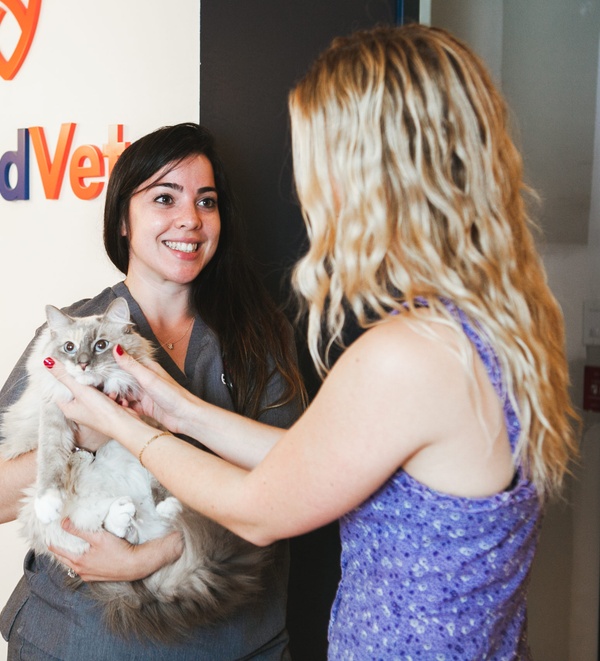
Cat Vision: Seeing Things From Their Perspective
As cat parents, we often marvel at how our feline friends interact with, and perceive, the world around them. From losing it over lasers and obsessing over tiny movements to mesmerizing us with those ever-changing pupils, it makes us wonder what it’s like to see the world from a cat’s eyes.
To start, cat vision is inherently different from humans in multiple ways. How and what our cat’s view clearly is the result of centuries of evolution that make our felines the way they are today.
Can cats see in color?
Yes, although the full answer isn’t so black-and-white. If you channel your high school science curriculum, you may recall that vision is all about rods and cones in the eye. Cats have significantly less cones than humans, which work as light receptors in the retina to perceive light. For humans, that means being able to perceive a broad spectrum of colors. For cats, it means they’re limited to seeing muted tones—largely blues, greens, and gray—with less saturation and variation. This muted sense of color is similar to what a colorblind person may experience: our kitties can see some shades of blue and gray but perceives reds as some version of gray.
That means, when it comes to purrchasing toys to stimulate your furry friend, you may want to opt for bright blues and greens that your cat can see. Of course, scent, texture, and function play a role in your cat’s preferences as well, but colors your kitty can perceive only add to the appeal.
At Bond Vet, we designed our space with our pets’ specialty vision in mind. We opted for pastel-colored walls balanced by warmer, yellow lighting (rather than clinical white fluorescents) to create a calmer environment for every pet and parent who walks, crawls, pounces, or leaps through our door. (DIY tip: warm lighting and similar hued walls also work great for you and your pet’s home as well!)
Light up the night
Cats may have fewer cone receptors than humans, but they more than make up for it with a high concentration of rods. This means that while they detect less color than us, they have excellent night vision. If you’ve ever been subject to your kitty’s 4 am zoomies, you’re probably no stranger to the fact that most felines are active at dawn or dusk — cats make great use of being able to see in low light.
A cat’s distinctive pupils play a significant role in their ability to see so well at night. Their elliptical pupils can dilate from puddles you’d get lost in to hairline slivers, depending on their exposure to light. Cats also display their mood in their pupils, which is why you’ll often see them dilate when your kitty is angry or about to pounce.
In addition to incredibly adaptive pupils, our cat’s eyes have a layer of reflective tissue, called tapetum lucidum, that sits behind the retina. It reflects incoming light back to the rod receptors to increase the light available, which contributes to stronger night vision and that eerie glowing eyeball effect your kitty has in photos. #nofilter
A different perspective
Although you can’t seem to get anything past your kitty, cats actually tend to be nearsighted, which means they can’t see far off objects clearly. While the average person can see distances of 100-200 feet, most cats must be within 20 feet of an object to see it clearly, although they tend to perceive fast-moving objects better. This makes cats excellent target hunters for closeup prey…or your toes when they’re enjoying some lap time.
Sources:
- https://www.americanveterinarian.com/journals/amvet/2018/august2018/vision-in-dogs-and-cats
- http://www.animalplanet.com/pets/cat-eyes-vision/
- https://www.livescience.com/40460-images-cat-versus-human-vision.html
- https://www.businessinsider.com/pictures-of-how-cats-see-the-world-2013-10
- https://www.popsci.com/article/science/see-world-through-eyes-cat/
- https://www.wired.com/2013/10/cats-eye-view/